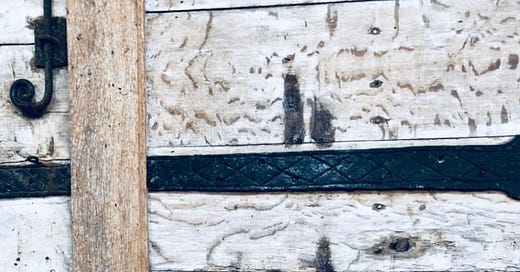The Devil’s Dog and a witness to the Reformation - Blythburgh Church.
“All down the church in midst of fire, the hellish monster flew, and passing onward to the quire, he many people slew”
So goes a local rhyme and a large wooden door inside St Mary’s church is said to still bear the scars of this legendary event. When a large black dog-like creature, sent from the devil, burst into the church in 1577 and slew many, slicking the floor with blood. It targeted the church, som said, in retaliation, for the destruction wrought on the church by Henry VIII’s Reformation.
This hellish monster was said to have taken the form of a ferocious hellhound, with flaming eyes and vicious claws. Claws that it is said mark the doors of Holy Trinity church to this day.
This black beast is said to haunt the landscape of East Anglia, tracking the footpaths of the Suffolk coast, where although his feet make no sound his howls can be heard if you are abroad after dark.
Such is his power that even glimpsing him will drain the life from any victim. This creature is sometimes referred to as Shuck, derived from an old english word for demon.
The church of Holy Trinity in Blythburgh is known as the ‘cathedral of the marches’ and is best known for its ‘devils’ footprints or claw marks, said to date back to the massacre. Today the light and airy church seems to invite not frighten visitors.
There was a church on the site by 654 when the bodies of the East Anglian king Anna and his son Jurmin were brought there after their deaths in battle fighting the Mercian king Penda. Their burials have long since been lost but many visit due to the church's Anglos Saxon connection with Anna, whose death led to the rise of Mercian power in the region. 3 or possibly 4 of his daughters were canonised, and one Seaxburh became abbess of Ely and wife to Eorcenberht of Kent.
By 1066 Blythburgh belonged to the royal estate and grew to become one of the richest churches in Suffolk. At one point it had an adjoining priory but this was suppressed during the Reformation.
It was at this time of religious upheaval that Shuck is said to have visited the church. On the 4th August 1477 a huge storm hit the area and lightning struck the church during a morning service and brought down the church tower. It is easy to see how such an event would give birth to such a legend, as people sort to redefine their faith in this time of upheaval.
One other notable feature of the church is its magnificent flying angels, that adorn the roof. But these brought the church to the attention of the Puritans who in the 17th century assigned it to the care of William Dowsing, a local puritan, in order that such superstitious features as the flying cherubim be removed. Dowsing was between 1643-44 responsible for the removal of items deemed Catholic or idolatrous from some 250 churches in Cambridgeshire and Suffolk. He left a journal detailing this iconoclasm in which he records these activities. This is link to his journal online: http://www.williamdowsing.org/journal_online.html
These angels were restored in the 19th century and today 36 fly above the nave.
It remains however for its association with the Reformation and the Black Hellhound that the church is still best known.






